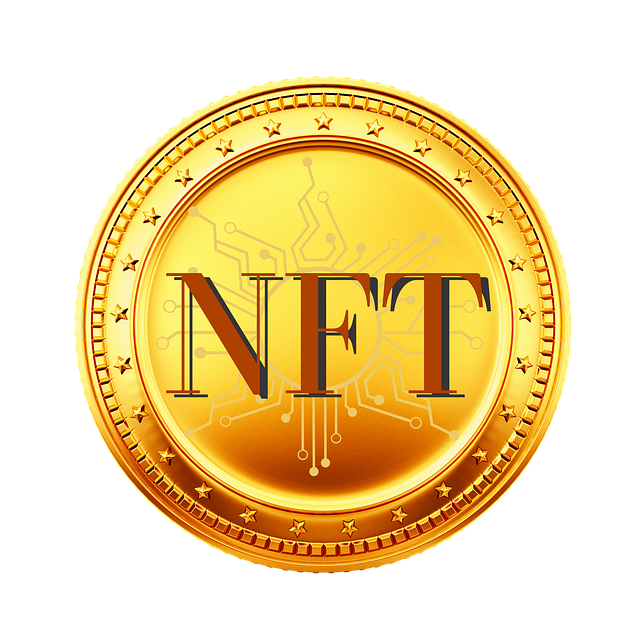Best Strategy for Trading Crypto Futures
Author: Jameson Richman Expert
Published On: 2025-09-26
Prepared by Jameson Richman and our team of experts with over a decade of experience in cryptocurrency and digital asset analysis. Learn more about us.
Trading crypto futures provides traders with a powerful avenue to capitalize on the high volatility inherent in the cryptocurrency markets. These derivative instruments allow for leveraged speculation, hedging against existing holdings, and diversifying portfolios. The unique features of crypto futures—such as 24/7 trading, high leverage, and rapid price swings—demand a meticulously crafted strategy that balances opportunity with risk control. To succeed, traders must develop a deep understanding of market mechanics, utilize sophisticated technical and fundamental analyses, implement rigorous risk management protocols, and harness advanced platform features. This comprehensive guide aims to equip you with in-depth insights, nuanced strategies, and practical tips to enhance your trading performance and resilience in the complex world of crypto futures.

Understanding Crypto Futures and Market Mechanics
Crypto futures are standardized derivative contracts that grant traders the right or obligation to buy or sell a specific amount of cryptocurrency at a predetermined price at a future date or under certain conditions. These contracts serve multiple purposes—hedging against price volatility, executing speculative strategies, and enabling leverage to amplify gains or losses.
Unlike spot trading, which involves immediate asset transfer, futures allow traders to control larger positions with a smaller capital outlay, thanks to leverage. This amplifies both profit potential and risk exposure, emphasizing the importance of a solid grasp of underlying mechanics:
- Margin and Leverage: Margin acts as a security deposit required to open a futures position. Leverage multiplies this exposure—e.g., 10x leverage means controlling a position worth ten times your margin. While leverage can dramatically increase profits, it equally magnifies losses, raising the risk of margin calls and liquidations. Understanding platform-specific margin requirements, maintenance margins, and liquidation thresholds is crucial to avoid unforeseen losses.
- Contract Types: Futures generally fall into two categories: perpetual contracts with no expiry date, which simulate spot prices via funding rates, and fixed-expiry contracts that settle at specified dates. Perpetual contracts often incorporate periodic funding payments—either paid by longs to shorts or vice versa—to keep futures prices aligned with the underlying spot market. Fixed-expiry contracts require strategic planning around rollover and expiry dates, influencing your trading frequency and timing.
- Funding Rates and Cost of Carry: Funding rates are periodic payments exchanged between longs and shorts in perpetual contracts, adjusted based on the premium or discount relative to the spot price. A high positive funding rate indicates bullish sentiment, where longs pay shorts, increasing holding costs. Conversely, negative rates benefit shorts. Incorporating funding costs into your profitability assessment helps in selecting optimal entry points and managing positions effectively.
A thorough understanding of these mechanics provides a strong foundation, enabling traders to develop strategies that are market-aligned, risk-aware, and capable of adapting to the fluid dynamics of crypto markets.
Market Analysis: Technical and Fundamental Approaches
Successful crypto futures trading hinges on a harmonious integration of technical analysis (TA) and fundamental analysis (FA). Each approach offers distinct insights—TA interprets price action, patterns, and indicators for immediate decision-making, while FA examines macro and microeconomic factors, project developments, and industry news for long-term directional bias.
Technical Analysis (TA)
TA involves analyzing past price charts, volume data, and technical indicators to predict future movements. Advanced traders leverage an array of tools to refine entry and exit points:
- Moving Averages (MA): Simple (SMA) and exponential (EMA) MAs identify trend directions and dynamic support/resistance zones. Crossovers like the Golden Cross (short-term MA crossing above long-term MA) suggest bullish momentum, whereas the Death Cross signals potential downturns.
- Relative Strength Index (RSI): Measures overbought (>70) or oversold (<30) market conditions, aiding in timing entries and exits. Divergences between RSI and price can presage reversals.
- MACD (Moving Average Convergence Divergence): Tracks momentum shifts through moving average convergence and divergence, providing early signals for trend changes.
- Fibonacci Retracements and Extensions: These levels help identify potential price reversal zones during corrective phases within trends, guiding precise placement of stop-losses and profit targets.
Further sophistication is achieved by analyzing volume spikes, order book depth, and chart formation patterns—like head and shoulders, triangles, or double tops/bottoms—that indicate potential trend continuations or reversals. Oscillators such as Stochastic, Bollinger Bands, and custom indicators can be combined for enhanced decision-making tailored to your trading style.
Fundamental Analysis (FA)
FA assesses macroeconomic and industry-specific factors that influence long-term price trends. Critical elements include:
- Regulatory environment changes—bans, endorsements, taxation, and legal clarity—can significantly impact market sentiment and liquidity.
- Technology upgrades like protocol forks, scalability solutions, security enhancements, and network upgrades influence network security, user confidence, and adoption prospects.
- Macro factors such as interest rates, inflation, geopolitical tensions, and macroeconomic policies shape capital flows and risk appetite, indirectly impacting crypto valuations.
- On-chain metrics—including hash rate, active addresses, transaction volume, and network security indicators—provide insights into network health, user engagement, and potential growth trajectories.
Combining FA insights with TA signals creates a robust framework, allowing traders to anticipate fundamental shifts and position themselves advantageously, thereby avoiding impulsive decisions driven solely by short-term price movements.
Risk Management and Position Sizing
Risk management remains the cornerstone of sustainable crypto futures trading. Given high leverage and market volatility, disciplined risk protocols safeguard your capital and foster consistent growth:
- Stop-Loss and Take-Profit Orders: Predefined exit points ensure disciplined trade management. Trailing stops dynamically lock in profits during trending markets, adjusting as the market moves favorably.
- Position Sizing: Limit risk exposure per trade—typically 1-2% of total capital—adjusted for market volatility. Smaller positions during turbulent periods prevent outsized drawdowns.
- Risk-Reward Ratios: Structure your trades so that potential rewards outweigh risks—common ratios include 2:1 or 3:1—improving the odds of long-term profitability.
- Portfolio Diversification: Spread your capital across different assets, sectors, or strategies to reduce systemic risk and smooth overall returns.
Additional techniques like partial profit-taking, scaling into/out of positions, and adaptive stop adjustments can help manage market swings and optimize gains.
Leverage and Margin Considerations
While leverage offers amplification potential, overleveraging can lead to rapid margin calls and liquidation. Use leverage conservatively, especially in volatile environments. Regularly monitor margin levels, understand your platform’s liquidation policies, and maintain buffers to withstand sudden downturns. Platforms such as Binance, Bybit, and others provide educational resources—use them to navigate margin intricacies effectively, ensuring your risk appetite aligns with your leverage use.

Choosing the Right Trading Platform
Your choice of trading platform significantly impacts execution speed, security, and access to advanced features:
- Security: Prioritize platforms with robust security protocols, insurance funds, transparent security audits, and strong user authentication measures.
- Advanced Trading Tools: Look for customizable charting, a variety of order types (stop-limit, OCO, trailing stops), API integration, and support for custom indicators—these facilitate complex strategies and automation.
- Liquidity and Execution Speed: High liquidity reduces slippage, ensuring your orders are filled at expected prices—especially important during volatile conditions.
- Demo and Paper Trading: Practice strategies risk-free to familiarize yourself with platform features and refine your approach before risking real capital.
Leverage referral programs—such as those offered by MEXC and Bitget—to gain additional benefits, trading bonuses, and insights that enhance your platform experience.
Developing a Trading Plan and Discipline
A comprehensive trading plan is essential for consistent success. It should include clear criteria for entries and exits, risk limits, profit targets, and contingency strategies based on thorough analysis. Strict adherence to your plan prevents emotional and impulsive trading, which are common pitfalls in highly volatile markets.
Maintaining a detailed trading journal—recording rationale, emotional state, trade outcomes, and lessons learned—enables continuous improvement. Regular review of this journal helps identify behavioral tendencies, refine strategies, and reinforce discipline.
Discipline involves following your predetermined rules, managing expectations, and controlling emotions—especially during market swings. Establish routines, set regular review sessions, and cultivate patience. Remember, long-term success depends on consistent, disciplined execution and emotional resilience amidst market turbulence.
Advanced Strategies: Hedging and Arbitrage
Seasoned traders can utilize advanced tactics like hedging and arbitrage to mitigate risks and maximize profits:
- Hedging: Opening offsetting positions—such as shorting correlated assets or futures—reduces exposure to adverse moves. For example, a trader holding a long Bitcoin position might hedge exposure by shorting a highly correlated altcoin or using reverse futures contracts, thus balancing potential downside without liquidating holdings.
- Arbitrage: Exploiting short-lived price discrepancies between exchanges or between spot and futures markets can generate consistent profits. Effective arbitrage demands rapid execution, access to multiple platforms, and real-time data feeds. Transaction costs and execution delays, however, can erode gains, making infrastructure and speed vital.
Platforms like Bybit facilitate such strategies through multi-exchange integration, API support, and advanced order types, enabling traders to capitalize on fleeting arbitrage opportunities efficiently.

Staying Updated and Continuous Learning
Crypto markets evolve swiftly—driven by regulatory shifts, technological innovation, macroeconomic developments, and network upgrades. Staying informed and adaptable is essential for maintaining an edge:
- Follow reputable news sources like CoinDesk, CoinTelegraph, and official project channels for timely updates.
- Participate in webinars, industry conferences, and join active communities on Twitter, Reddit, and Telegram to discuss strategies and insights.
- Engage with industry experts and analysts to understand emerging trends and potential risks.
- Invest in ongoing education—books, courses, and tutorials—to deepen your understanding of advanced trading techniques and market dynamics.
Continuous learning enables you to recognize new opportunities, adapt to regulatory changes, and refine your strategies in real-time, ensuring your edge remains sharp in a rapidly changing environment.
Conclusion
In essence, the most effective crypto futures trading strategy combines comprehensive technical and fundamental analyses with disciplined risk management, platform mastery, and ongoing education. Developing a clear, rules-based approach—defining entry and exit points, adhering to your plan, and remaining adaptable—is vital in navigating the high-stakes, volatile landscape of crypto futures markets. Selecting reputable, secure platforms with advanced tools—such as Binance, MEXC, Bitget, and Bybit—facilitates optimal execution. Remember, consistency, emotional discipline, and continuous learning are your greatest assets. Start conservatively, refine your approach through experience, and prioritize risk control to build sustainable profitability and resilience. With patience and perseverance, you can master crypto futures trading and achieve long-term success in this dynamic environment.